Henri Matisse, a pivotal figure in the Fauvist movement, is renowned for his extraordinary contribution to modern art. He and André Derain founded the Fauvist movement, which lasted from approximately 1904 to 1908 and is revered for his innovative and vibrant use of color and form. The Fauvist movement is recognized for its bold, non-naturalistic use of color to convey emotional expression, and Matisse was instrumental in defining this distinctive approach.
Matisse’s artwork stands unique because of its groundbreaking disregard for realistic, representative forms and colors. He used color as an independent element, unshackled from its typical task of defining the world in familiar ways. His artwork often presents a distinctive fusion of the abstract and the concrete, the formal and the spontaneous. This fearless experimentation is what sets Matisse apart from many of his contemporaries.
Table of Contents
- Title: Unveiling The Master: The Life And Art Of Henri Matisse
- The Legacy Of Henri Matisse
- Frequently Asked Questions
- Related Questions
Title: Unveiling The Master: The Life And Art Of Henri Matisse
From the verdant landscapes of Provence to the vibrant interiors of a Moroccan harem, the world of French artist Henri Matisse is awash with color, brimming with vitality, and steeped in tranquility.
As one of the 20th century’s most influential artists, Matisse’s unparalleled contribution to modern art continues to capture the hearts and minds of art enthusiasts around the globe.
The Life Of Henri Matisse
Born in 1869 in the textile town of Le Cateau-Cambrésis, in northern France, Matisse discovered his passion for art relatively late. Initially pursuing a law career, a bout of appendicitis at the age of 20 brought a dramatic turn to his life.
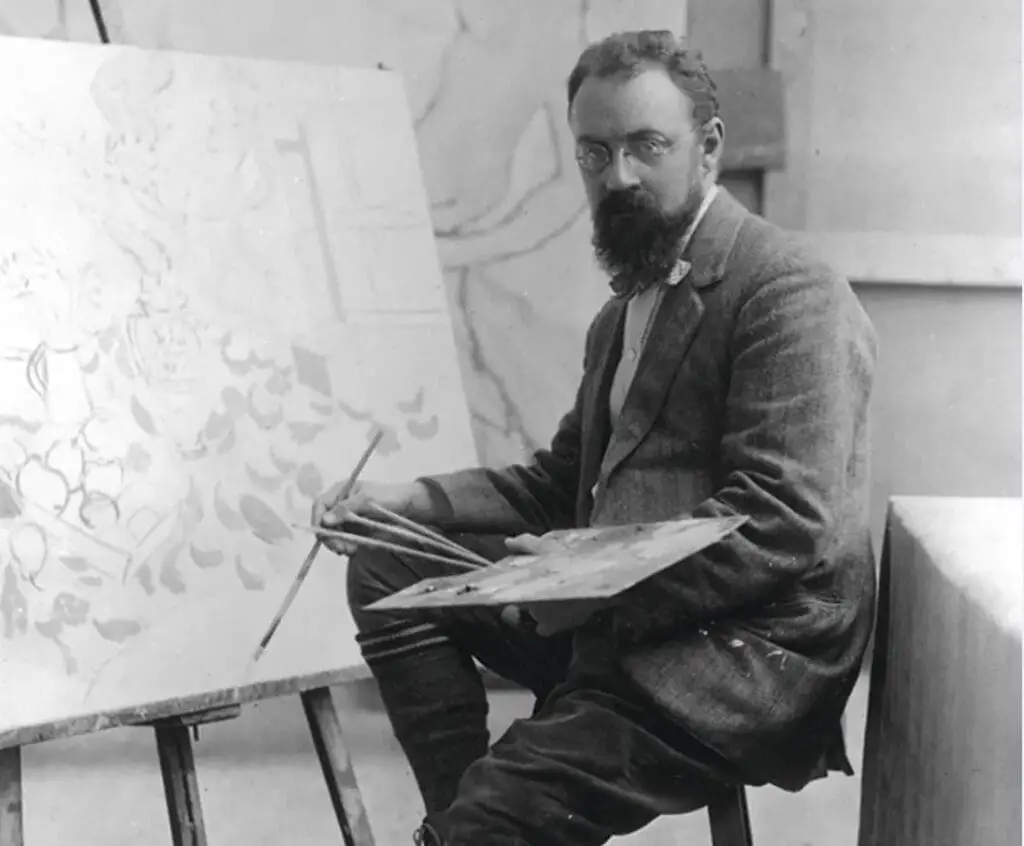
During his recovery, Matisse’s mother presented him with art supplies, triggering an unanticipated love for painting, which would persist for the rest of his life.
Matisse enrolled at the École des Beaux-Arts in Paris in 1891, where he was introduced to the works of the Old Masters, whose influence can be seen in his early paintings. His artistic evolution was punctuated by multiple phases, including his “fauvist” period, when he was associated with artists like André Derain.
Deriving its name from the French term “Les Fauves” or “Wild beasts,” Fauvism celebrated bold, non-naturalistic colors and brushwork, epitomized by Matisse’s work such as “Woman with a Hat” (1905).
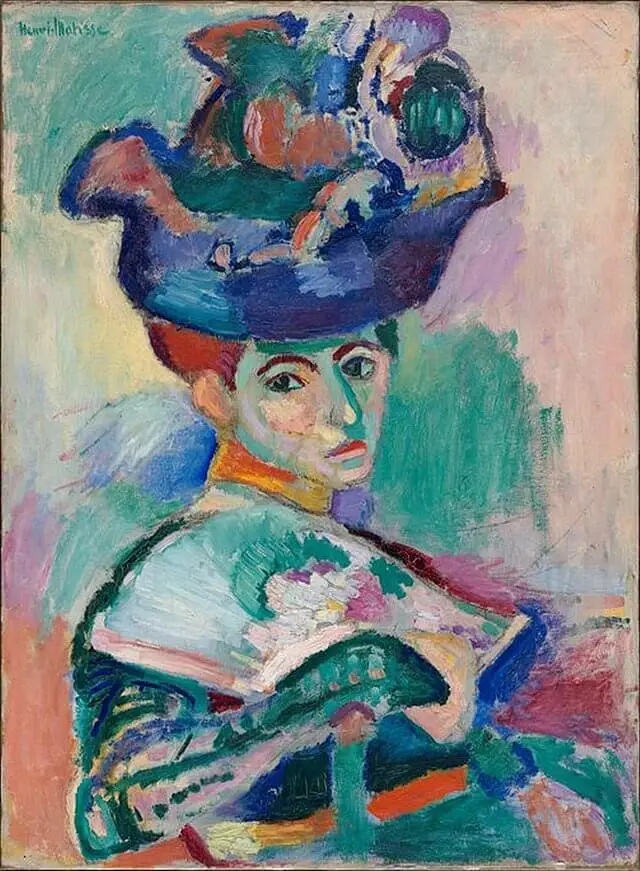
Matisse Did Not Confine Himself To One Art Style
However, Matisse was never confined to a single style or technique. His quest for artistic exploration led him towards a more balanced and serene aesthetic, often dubbed ‘an art of balance, purity, and serenity,’ as reflected in his famous works like “The Dance” and “La Musique.”
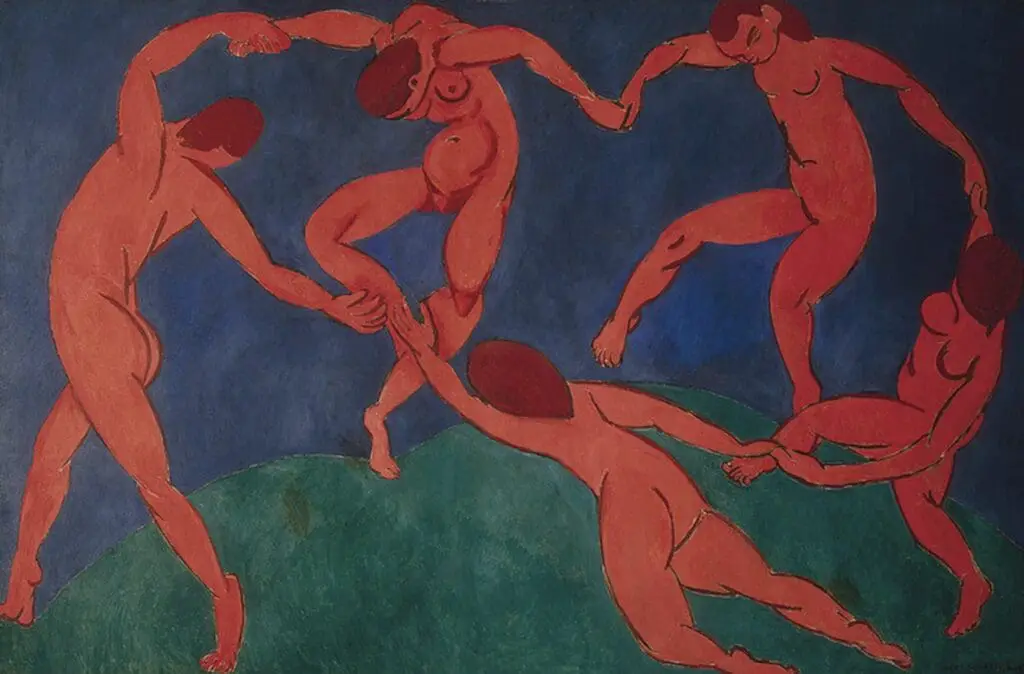
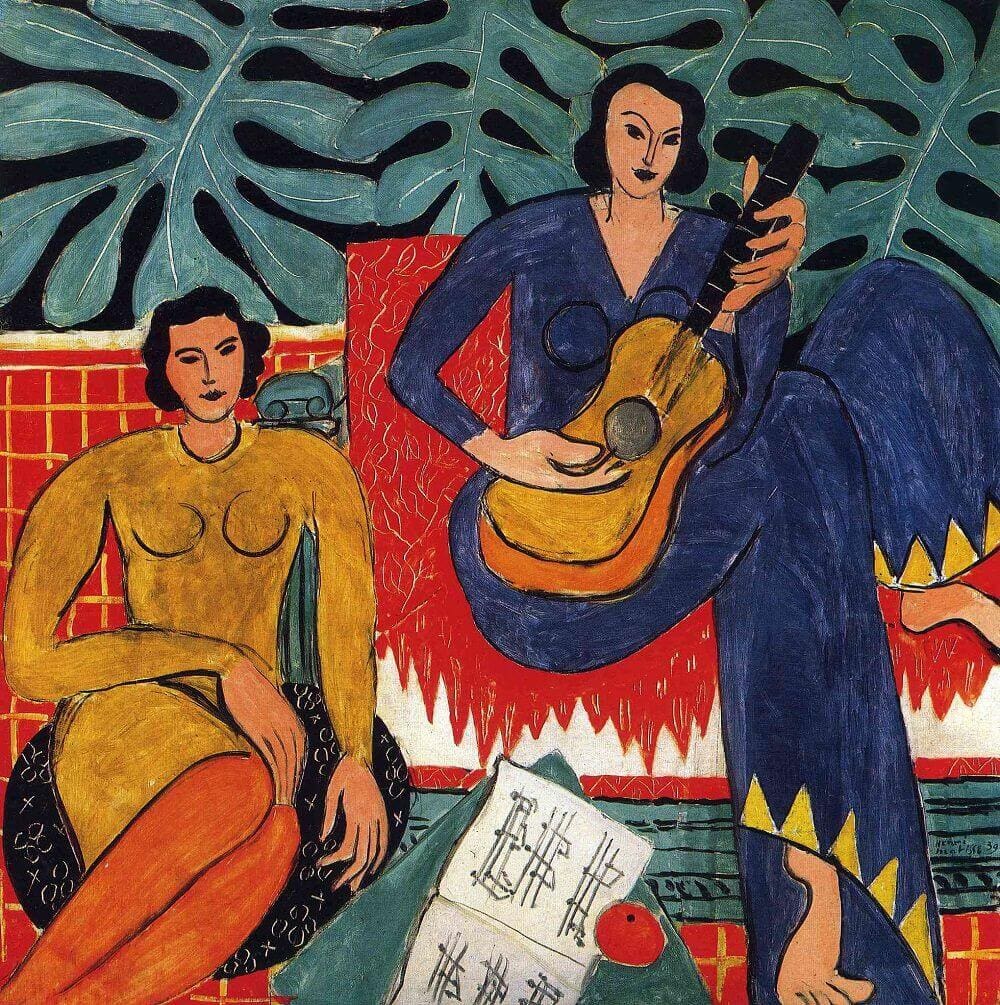
Here, he strived to create a perfect harmony between the structural lines and vibrant colors.
Matisse’s later years, he witnessed a dramatic shift in his art-making process, stemming from health issues that rendered him bedridden.
Unable to paint as he used to, he invented a new technique, the cut-outs, where he would carve shapes out of brightly colored paper and arrange them into dazzling compositions. These ‘paintings with scissors,’ as he liked to call them, include his celebrated pieces like “The Snail” and “Blue Nudes.”
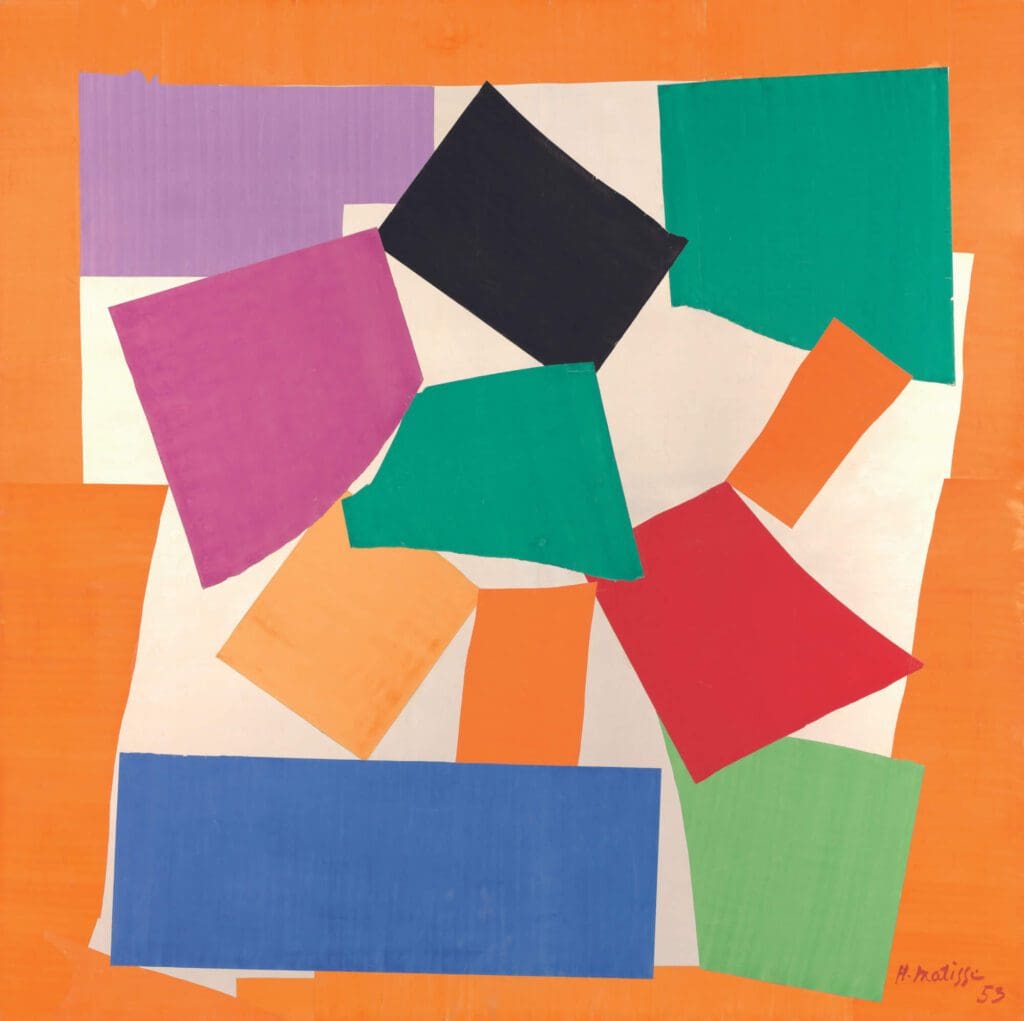
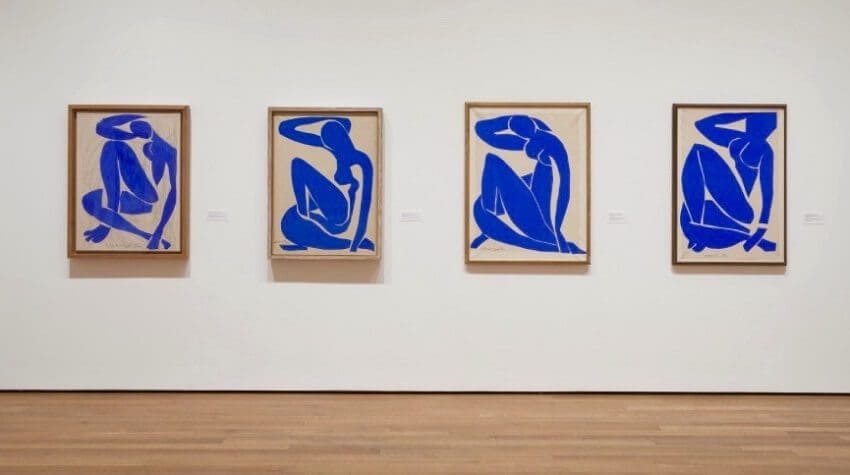
Henri Matisse’s Art Had An Indomitable Style
Despite the shifts in his style, Matisse’s art consistently exhibits an indomitable spirit and a constant quest for beauty. His works are imbued with an apparent simplicity that conceals their underlying complexity, much like Matisse himself.
A man of few words, Matisse preferred to let his paintings speak for themselves, revealing his feelings, his thoughts, and his unending love for life.
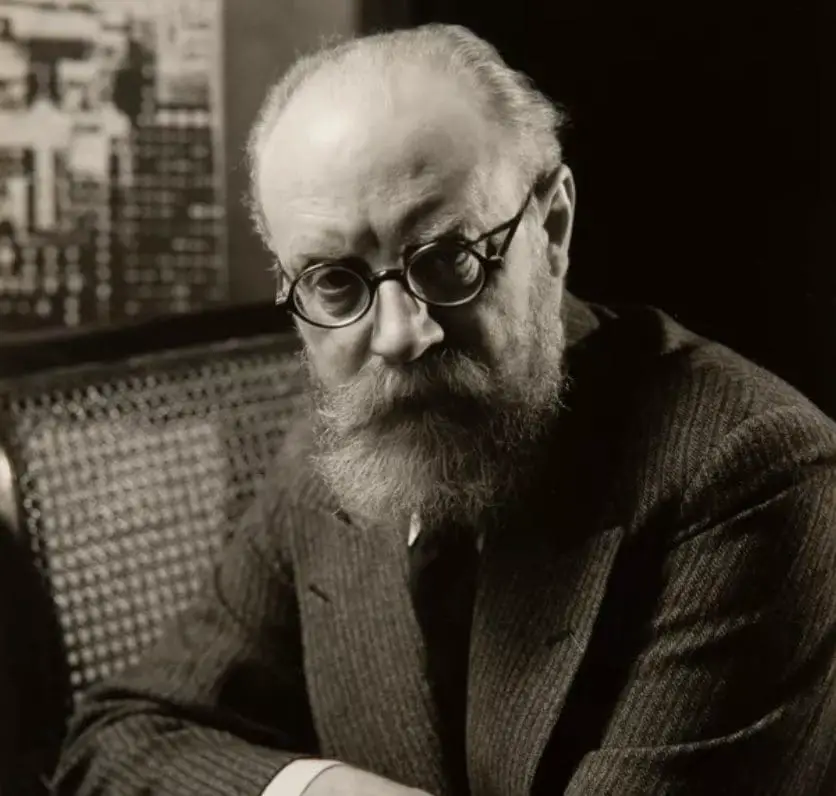
As we delve into the world of Matisse, we don’t just encounter an artist; we meet a visionary, a pioneer, a man who revolutionized the way we perceive color and form in art. A man who, despite physical adversity, continued to create, continued to inspire, and continued to celebrate life in all its vibrancy.
That, in essence, is the indomitable spirit of Henri Matisse, a testament to the transformative power of art and the enduring influence of an artist who indeed painted from the heart.
The Legacy Of Henri Matisse
The legacy of Henri Matisse is vast, with his influence permeating the modern art world. Although his styles varied, from his early days as a Fauvist to his later years creating innovative cut-outs, a common thread weaves through all of his work – his love for life, his appreciation for beauty, and his vision for balance and serenity.
Even though Matisse’s journey into the world of art commenced later than most, the depth and breadth of his work suggest a man deeply attuned to the rhythm of life and acutely aware of the world around him. This is evident in how he captured the subtle beauty of an interior scene or the evocative vibrancy of a lush landscape.
One might argue that Matisse’s true genius lay in his use of color and his unique understanding of form and structure. His compositions were more than just a grouping of objects and figures. Instead, they were carefully considered symphonies of shape and color. Even in his most dynamic paintings,
Matisse sought a sense of calm and balance. This focus on stability is a characteristic that remained constant throughout his career, reflecting his belief that art should be a refuge, a ‘soothing, calming influence on the mind.’
While the latter part of Matisse’s career was marked by health challenges, confining him to a wheelchair. Yet, these physical limitations did not confine his creativity.
On the contrary, it gave birth to some of his most innovative works. Using a pair of scissors as his brush, Matisse began to cut vibrant forms from painted paper, arranging them into compositions full of life and energy.
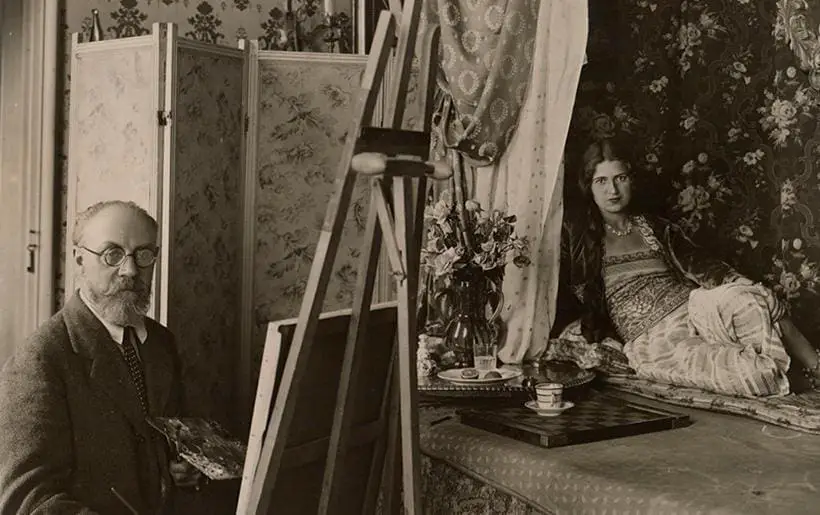
Matisse’s story is one of relentless pursuit of beauty, adaptation in the face of adversity, and art’s transformative power.
Even today, his work inspires artists and art lovers alike, encapsulating the spirit of a man who lived and breathed art. His ability to perceive and portray the beauty of life in all its forms makes him a great artist and a timeless beacon of inspiration.
I love this quote by Henri Matisse and find inspiration in his words when he says:
“Creativity takes courage.”
Henri Matisse
And indeed, Matisse’s legacy stands as a testament to a life of courage, creativity, and undying love for the world of art.
Listen To Our Podcast About Discovering Henri Matisse: A Journey Through Fauvism Below or by clicking here.

Anita Louise Art is dedicated to art education, great artists, and inspiring others to find and create their art. We love art that uplifts and inspires. #ArtToMakeYouSmile! #ArtToMakeYouHappy!
If you want to see any of my art, you can find out more by clicking here. If you are interested in what inspires me and my paintings, you can discover more by clicking here.
We have a free newsletter and would love you to be part of our community; you can subscribe to the newsletter by clicking here. If you have any questions, I would be happy to talk to you anytime. You can reach me, Anita, by clicking here.
Subscribe to our Anita Louise Art YouTube Channel with great videos and information by clicking here.
Join us for our podcast “5 Minutes With Art.” Spend just 5 minutes a week with us to discover and learn about great art and artists. You can find out more about our podcast by clicking here.
Frequently Asked Questions
Who is Henri Matisse?
Henri Matisse (1869–1954) was a French artist and a leading figure in the Fauvist movement. He is celebrated for his avant-garde approach to art, particularly his innovative use of color and form.
What is the Fauvist movement, and how was Matisse involved?
The Fauvist movement, active from around 1904 to 1908, was characterized by bold, non-naturalistic use of color to convey emotion. Henri Matisse, along with André Derain, co-founded this movement, playing a pivotal role in its development.
How did Matisse contribute to modern art?
Matisse significantly contributed to modern art by challenging traditional artistic conventions. He pioneered the use of color as an independent element, breaking away from realistic representation and exploring new ways to convey emotion and form.
What is distinctive about Matisse’s use of color?
Matisse’s use of color was groundbreaking in its boldness and non-conformity. He liberated color from its conventional role of depicting reality and used it independently to evoke emotions and create a sense of dynamism in his artworks.
What is the significance of Matisse’s fusion of the abstract and the concrete in his artwork?
Matisse’s fusion of the abstract and the concrete represents his unique artistic approach. He seamlessly blended formal elements with spontaneous expression, creating a style that transcends traditional artistic boundaries.
How did Matisse experiment with form in his artwork?
Matisse fearlessly experimented with form by disregarding realistic and representative forms. He explored abstract elements in his work, challenging conventional perceptions of shape and structure.
What makes Matisse’s artwork stand out among his contemporaries?
Matisse’s fearless experimentation and departure from traditional artistic norms set him apart from his contemporaries. His unique use of color and form, as well as his contribution to the Fauvist movement, established him as a key figure in modern art.
Can you provide examples of Matisse’s most famous works?
Some of Henri Matisse’s most famous works include “The Dance,” “The Red Studio,” “Woman with a Hat,” and “Blue Nude.” These paintings showcase his mastery of color and form.
How did Matisse’s artistic style evolve over his career?
Matisse’s artistic style evolved over the years. While he began with a more traditional approach, he progressively moved towards abstraction and experimentation. His later works, especially during his cut-out period, are notable for their simplicity and vibrant colors.
What is Matisse’s legacy in the art world?
Matisse left an enduring legacy in the art world as a pioneer of modern art. His innovative use of color and form, along with his role in the Fauvist movement, influenced subsequent generations of artists and continues to inspire contemporary art today.
Related Questions
Is There Any Painting Of The Young Leonardo da Vinci?
There is a painting by Giovanni Cariani (c. 1490-1547) at the National Gallery of Art, Washington DC, called Portrait of Man With a Dog (1520) that some people have said a painting of the younger Leonardo. Leonardo would have already been dead by the time this painting was completed. There is also a little-known artwork called Romanzo di Paolo e Daria by Gaspare Visconti that some feel is making fun of Leonardo da Vinci and his red hair.
By clicking here, you can learn more by reading Is There Any Painting Of The Young Leonardo da Vinci?.
What Inspired Leonardo da Vinci To Paint The Last Supper?
Duke Ludovico Sforza commissioned Leonardo to paint the Last Supper mural. What makes the Last Supper mural so unique is that he painted it at the exact time when Christ told the Apostles during The Last Supper meal that one of them would betray him. Leonardo showed the apostles’ reactions, including Judas, who betrayed Christ.
By clicking here, you can learn more by reading What Inspired Leonardo da Vinci To Paint The Last Supper?
Mona Lisa Painting And The Paris Louvre Museum
The Mona Lisa is one of the key paintings of the Louvre Museum. It is one of the most visited paintings in the world. The Mona Lisa is a painting studied, sung about, written about, and spoken about. There is still a mystery surrounding exactly who the Mona Lisa is and why Leonardo da Vinci painted it. This mystery adds to the allure of the painting.
By clicking here, you can learn more by reading Mona Lisa Painting And The Paris Louvre Museum.

